Sternwheelers in Whitehorse – reminders of our history
For its first 50 years, Whitehorse was solidly connected to the Yukon River, and to the sternwheelers and other boats that ran up and down it. Now, although the restored sternwheeler S.S. Klondike is the city’s most iconic attraction, the other boats have been pretty much forgotten, and even the community’s historicconnection to the river isn’t obvious.
The shipyards of the British Yukon Navigation Company was the heart of steamboat life in Whitehorse when the boats were operating. By the time Dave and Lois Mitchell shot the next two photos of the shipyards below, in about 1960, there wasn’t a lot left compared to what had been there. A couple of days ago, their daughter, Caren Hochstein, sent me several of their boat photos to use, in response to a couple of discussions in my Yukon History & Abandoned Places group on Facebook.
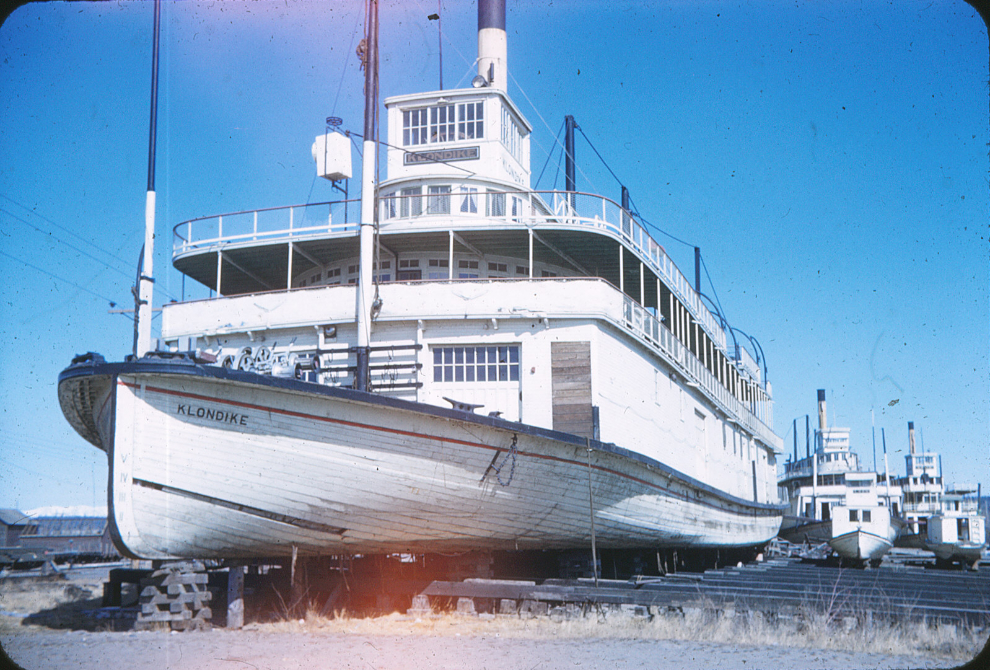
In 1961, the Aksala on the left in the next photo was disassembled and hauled up to the Alaska Highway to be used as a restaurant.
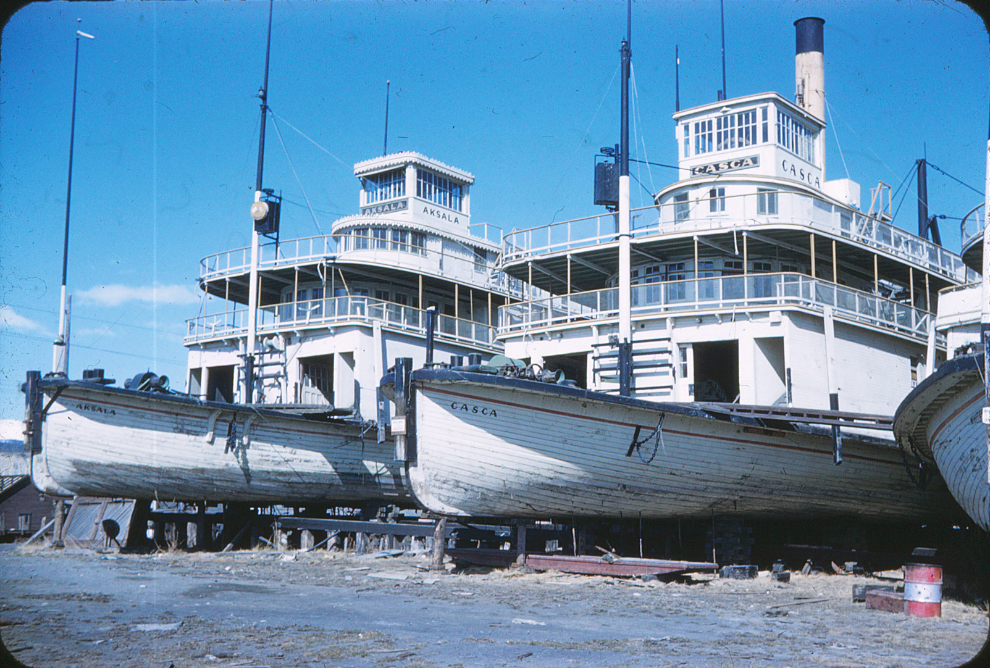
The Aksala was eventually burned because it was considered to be too deteriorated to be of any further use. Luckily, the 22,000-pound paddlewheel was saved, and was restored in 2010-2011. It sits at Paddlewheel Village at Km 1418.2 of the Alaska Highway.
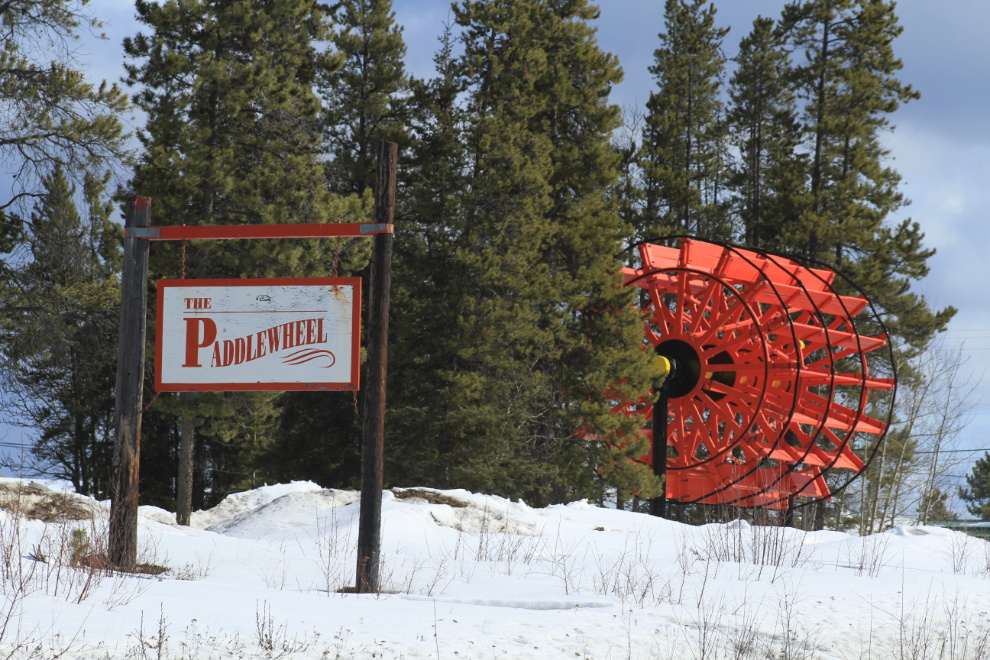
In 1966, the sternwheeler that was in the best condition, the Klondike, was moved from the shipyards to its new home upriver. The next photo is one of Dave and Lois Mitchell’s, and the late Les McLaughlin told the story of the move in one of his Yukon Nugget pieces on radio station CKRW.
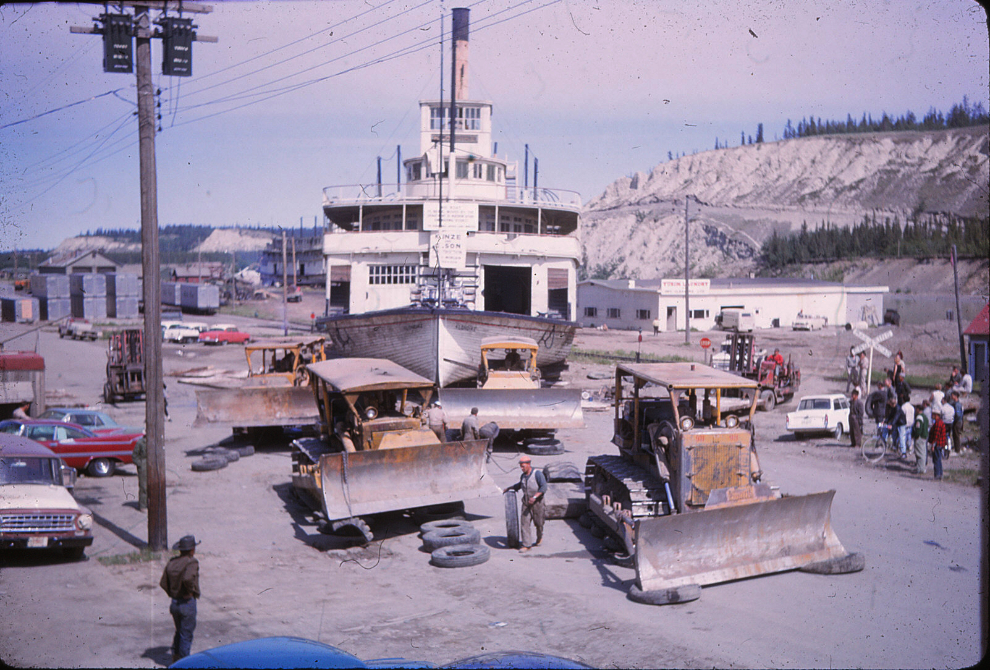
The story of the shipyards came to a dramatic end on June 21, 1974, when the sternwheelers Whitehorse and Casca burned. This uncredited photo is in the men’s washroom at the Yukon Transportation Museum. See more photos of and information about that fire here.
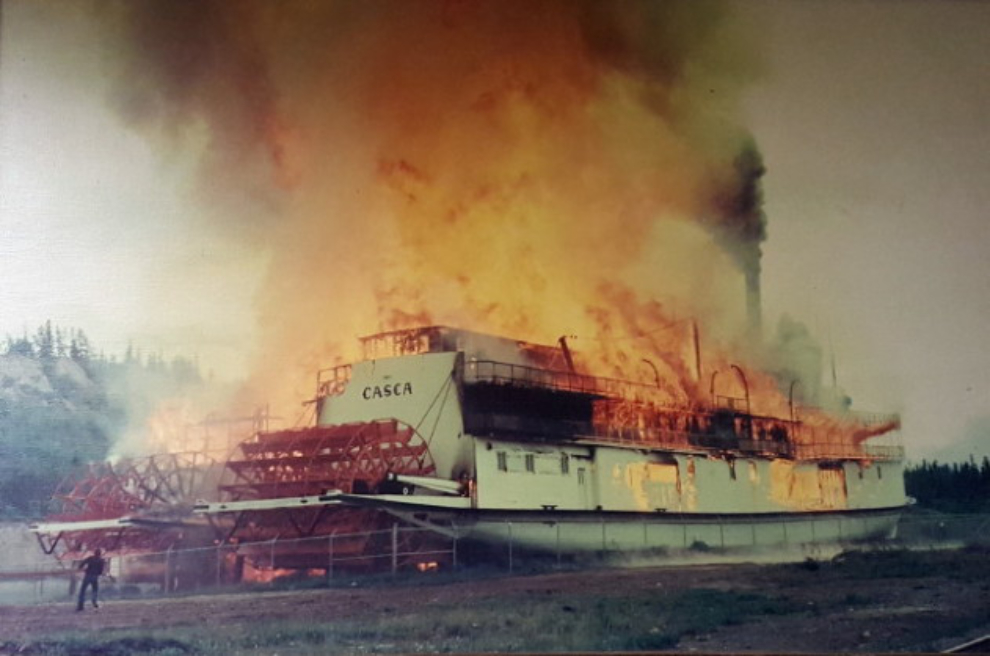
Today, as I mentioned, the S.S. Klondike is the main thing that keeps the exciting steamboat days in view of most Whitehorse residents, and a high percentage of visitors go to see it.
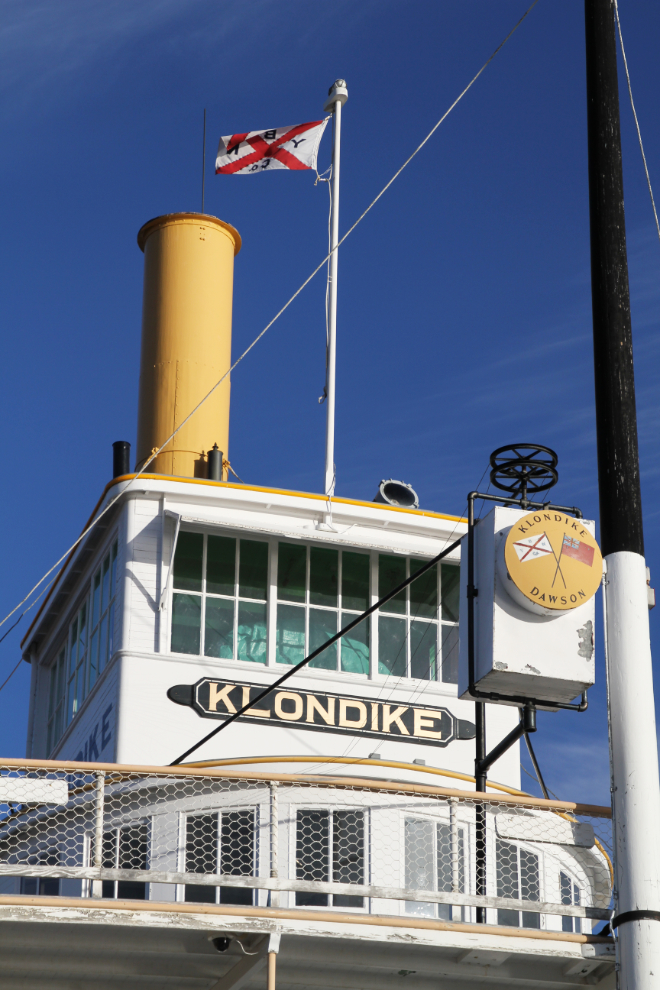
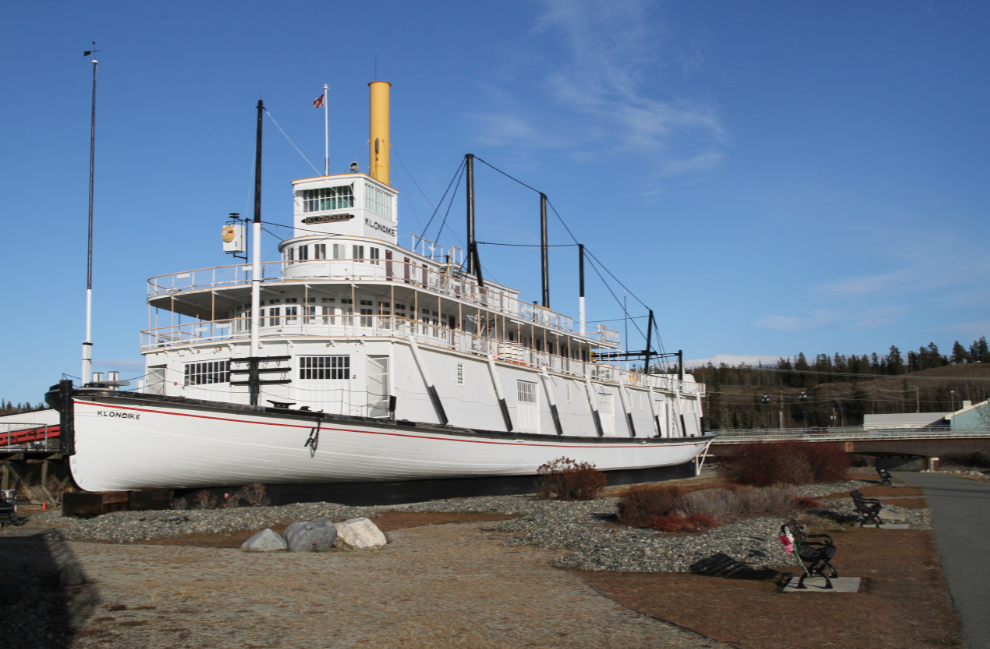
The British Yukon Navigation Company shipyard became a squatters’ village for many years, but is now a park that was named Shipyards Park.
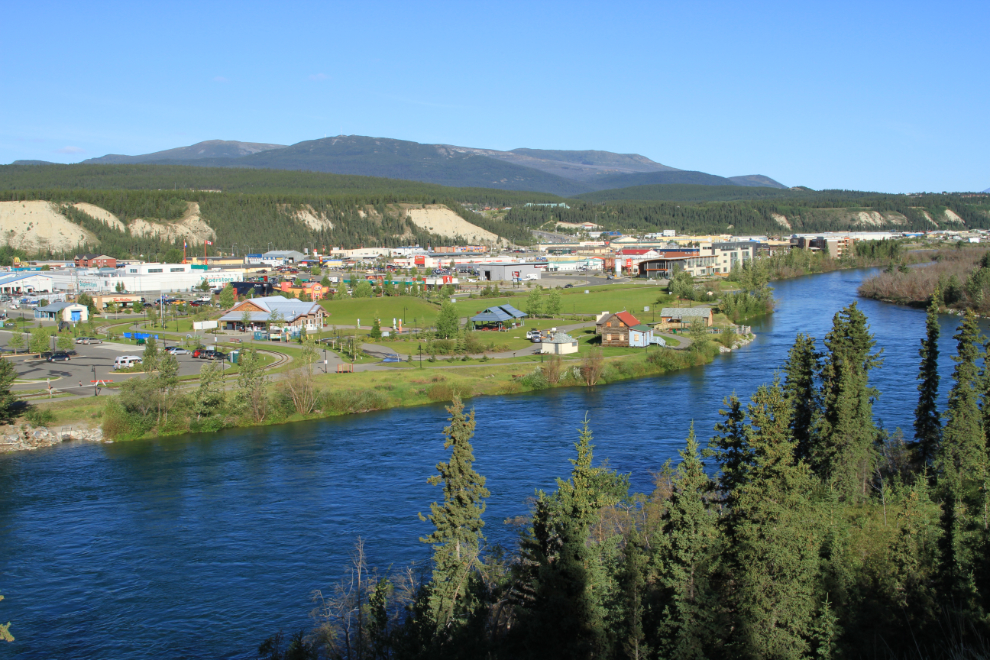
At extreme low water levels on the Yukon River, you can still see remnants of the days when the boats were running.
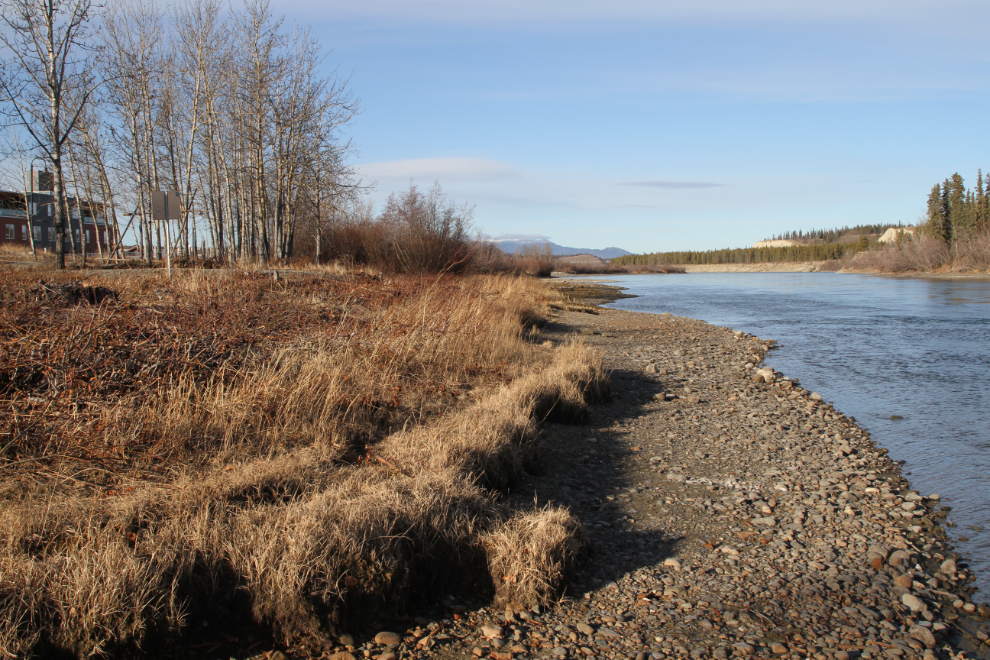
The largest artifacts are the timbers that the boats were slid along to be taken out of and put back into the river – the ways.
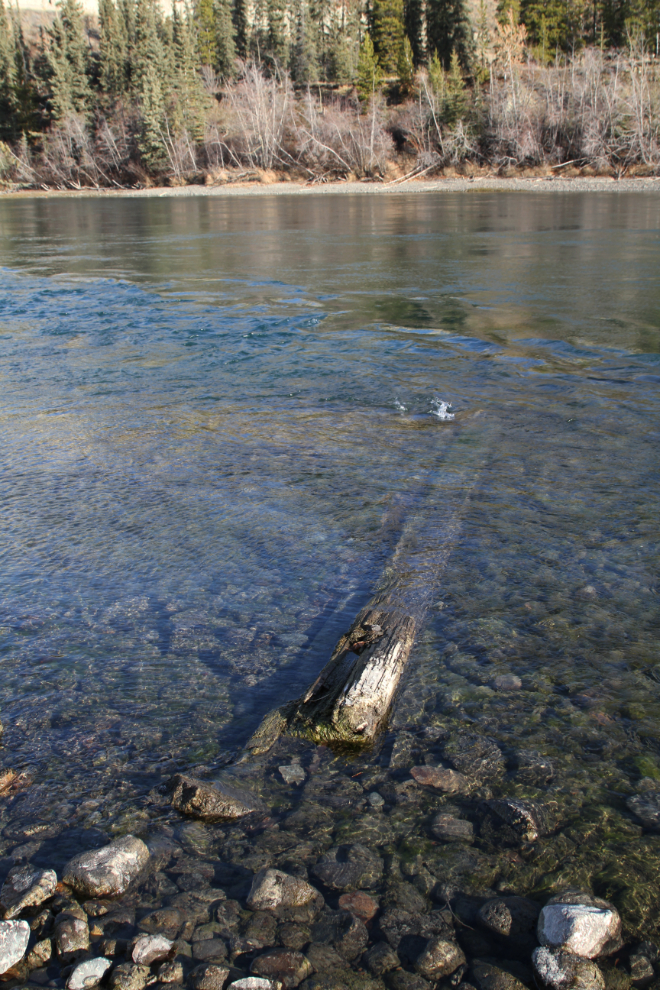
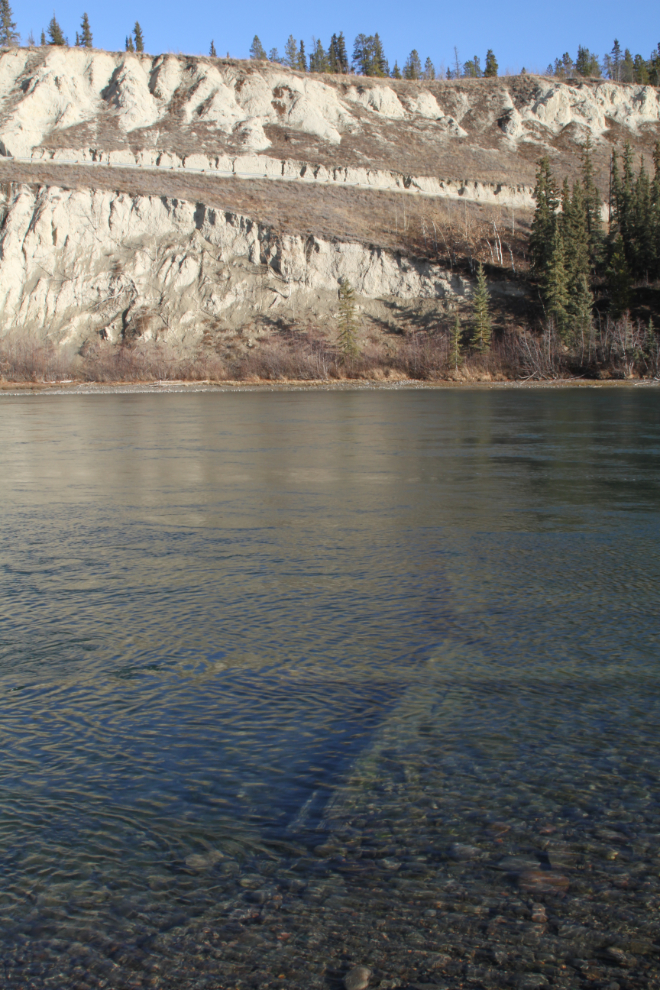
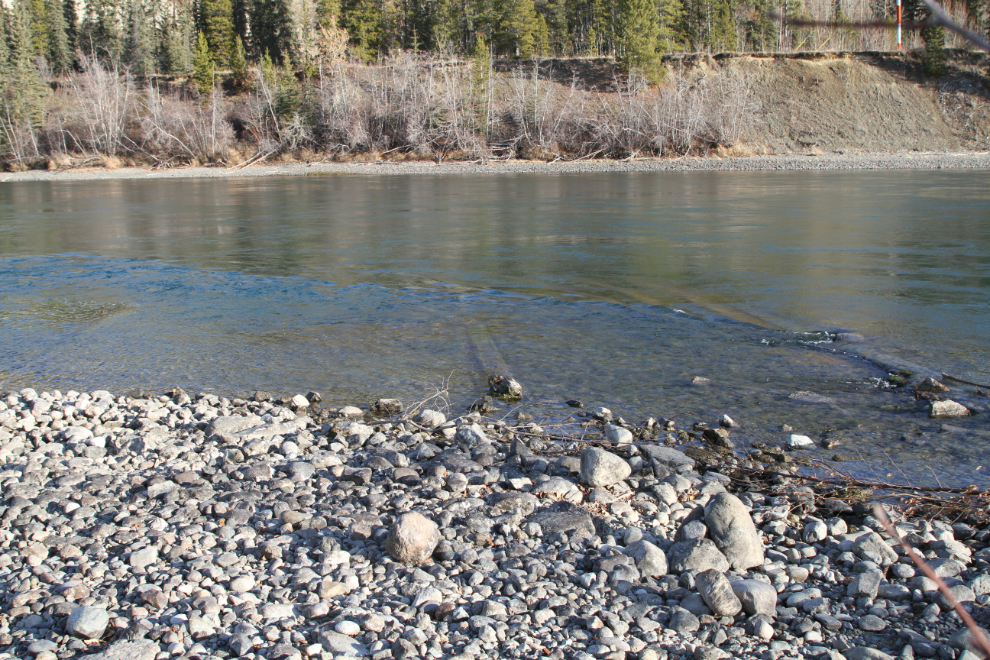
Looking closer along the riverank today, there is broken glass, pieces of steel – both scrap and equipment – and lots of hand-made spikes like the one in the next photo.
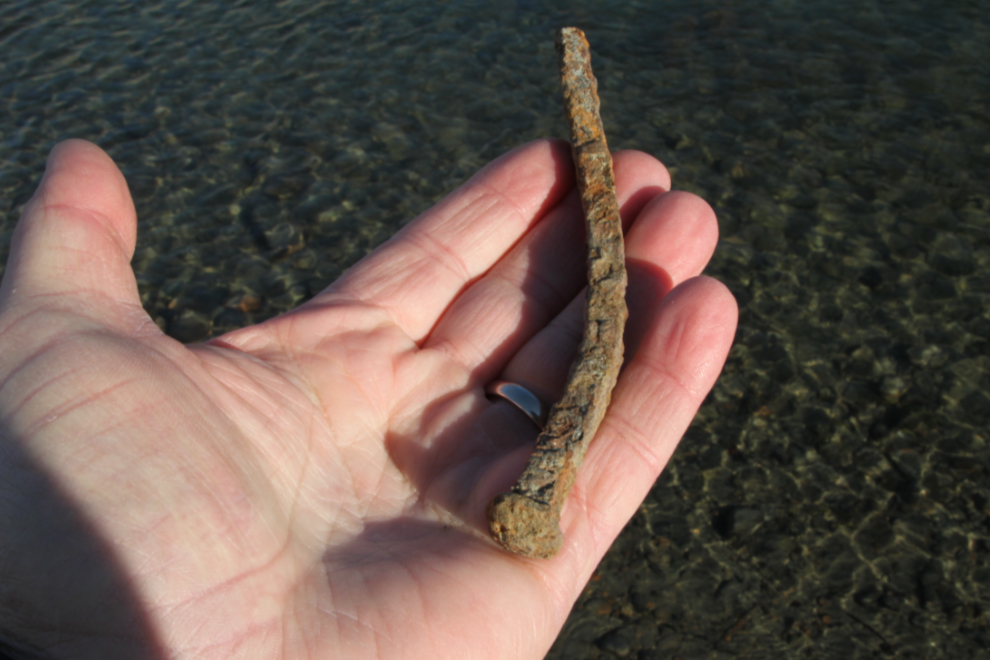
Docks and warehouses used to line the Yukon River. Now, although many have been buried in rock to stabilize the bank, there are still some pilings from those docks and buildings.
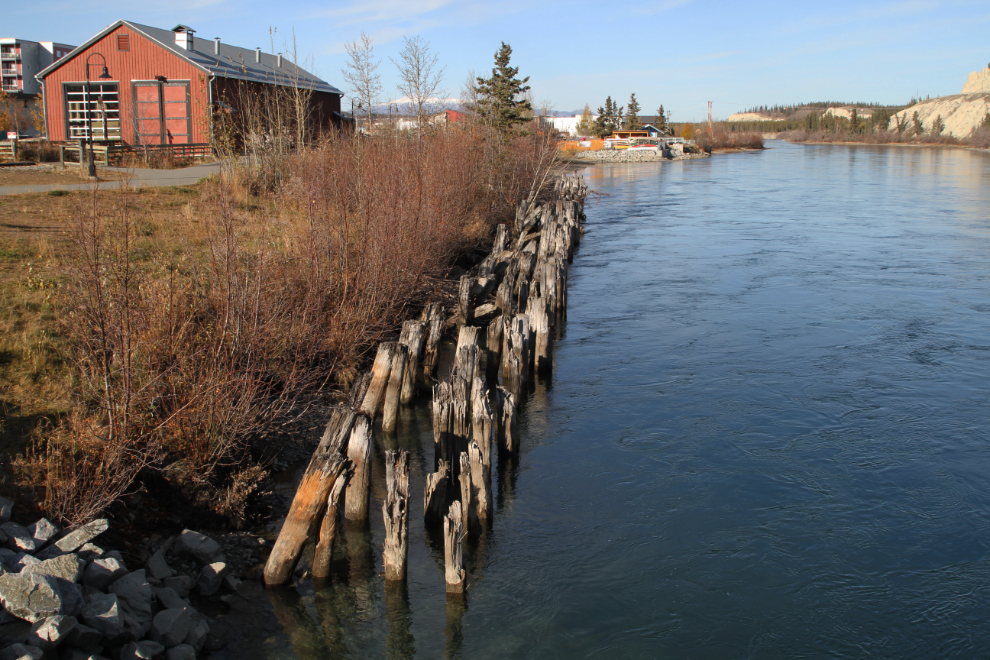
Some pieces of old equipment from steamboat dock operations can still be seen among the pilings.
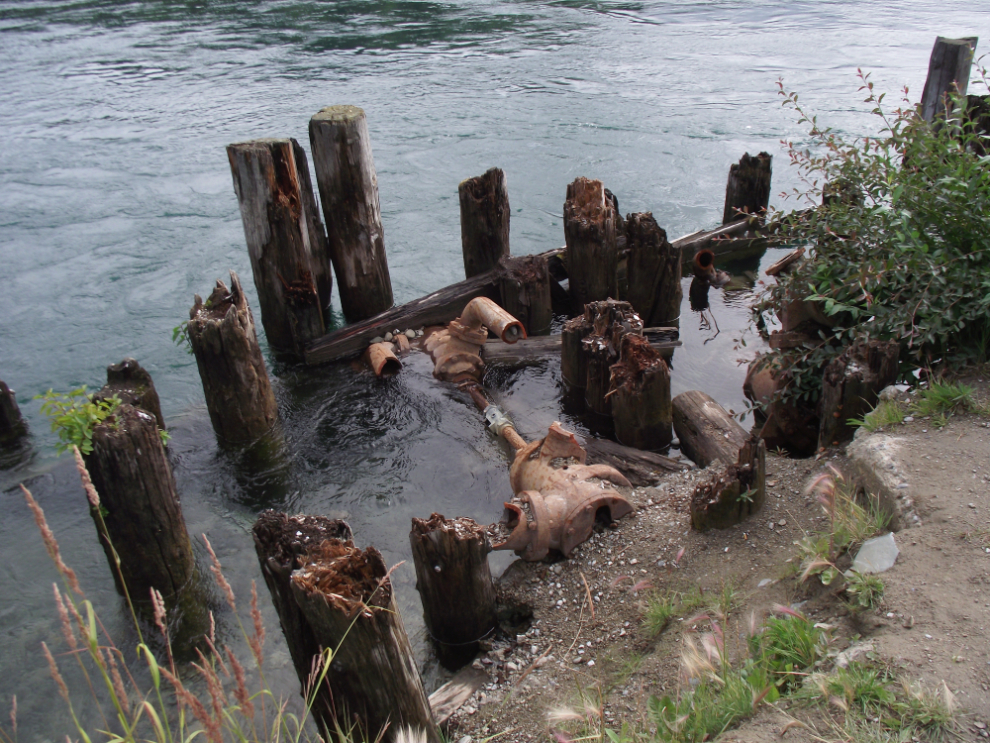
A paved walking path follows the Yukon River all the way through downtown Whitehorse, and a deck called The Wharf has been built beside the WP&YR train station. It quickly became a popular spot to stop and enjoy the river. The pilings seen in the photo above are immediately downriver from the The Wharf.
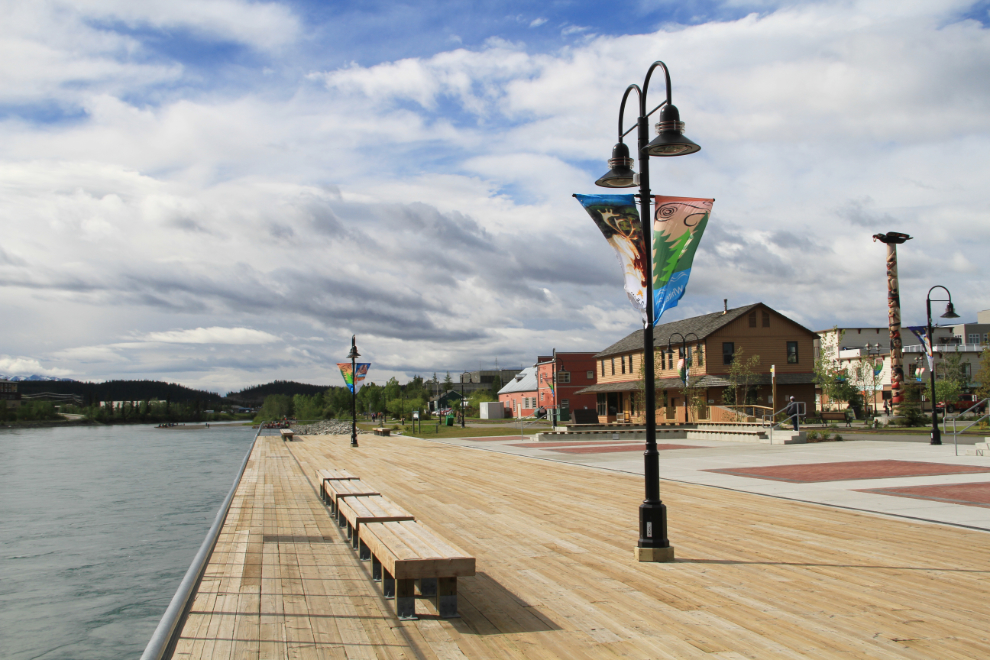
The sternwheel drive from the steamer Clara Monarch was recovered from the slough named for her, about a mile downriver, and has been painted and is on display at The Wharf.

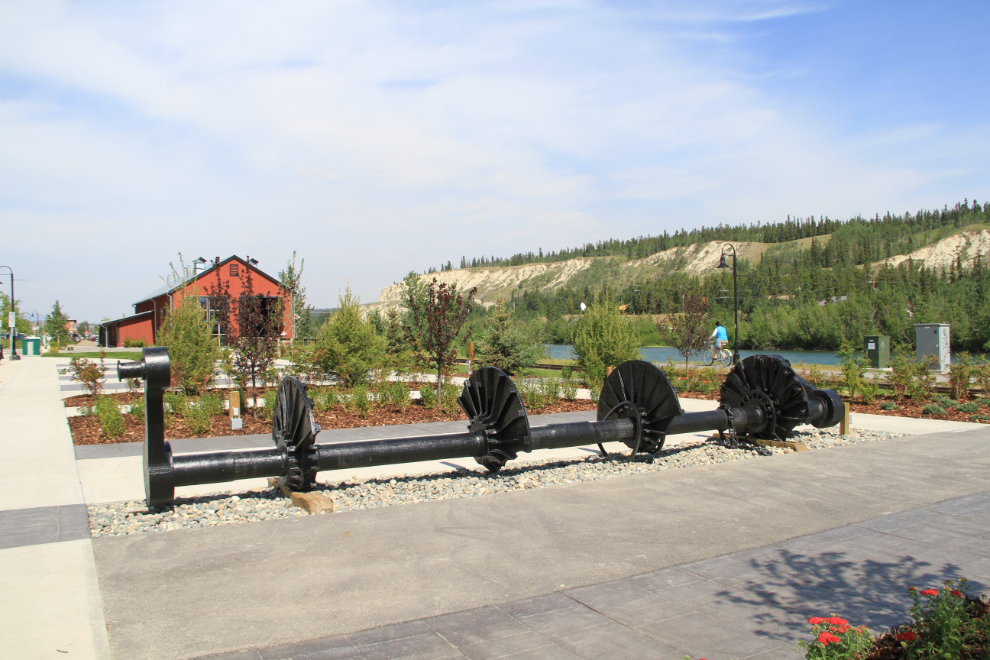
Upriver from the S.S. Klondike is a sternwheeler site worth mentioning. The sternwheeler Canadian was renowned for her longevity, working on the upper Yukon River from 1898 until being scuttled to serve as as a breakwater to protect the White Pass railway at Whitehorse in 1931. Until May 1997, her hull and equipment could be clearly seen in the clear shallow waters near what used to be called the “Big Bend” of the river, to the south of town. During a major road reconstruction project, however, she was buried under hundreds of tons of rock, although the boiler, pistons and sternwheel frame were recovered first, to be used in an interpretation project. The first photo below, of the Canadian being buried, was shot in April 1997, the second photo, of the interpretive site, was shot in October 2011.
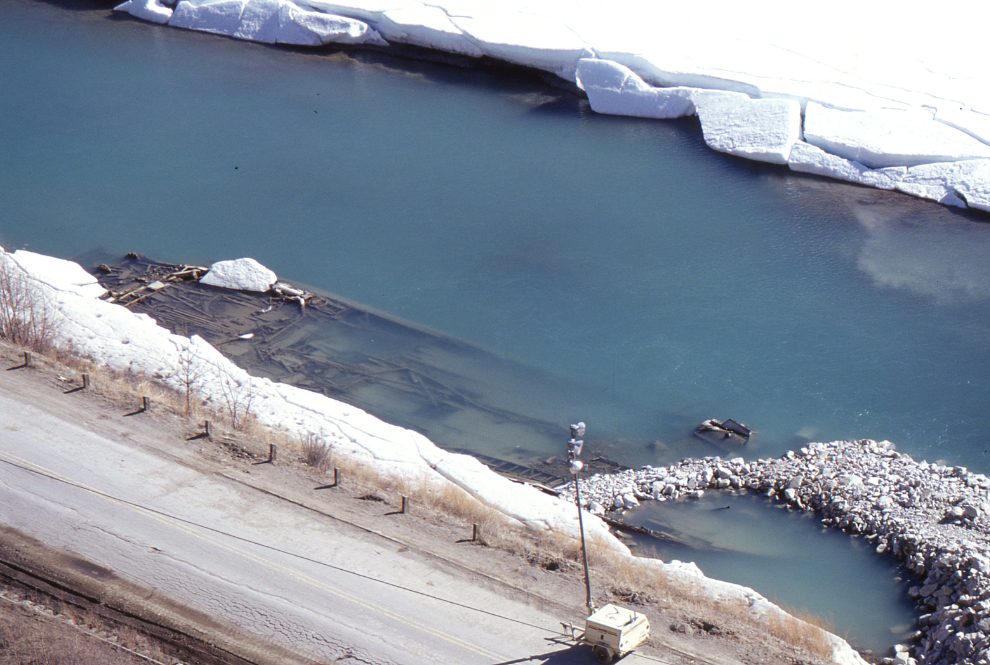
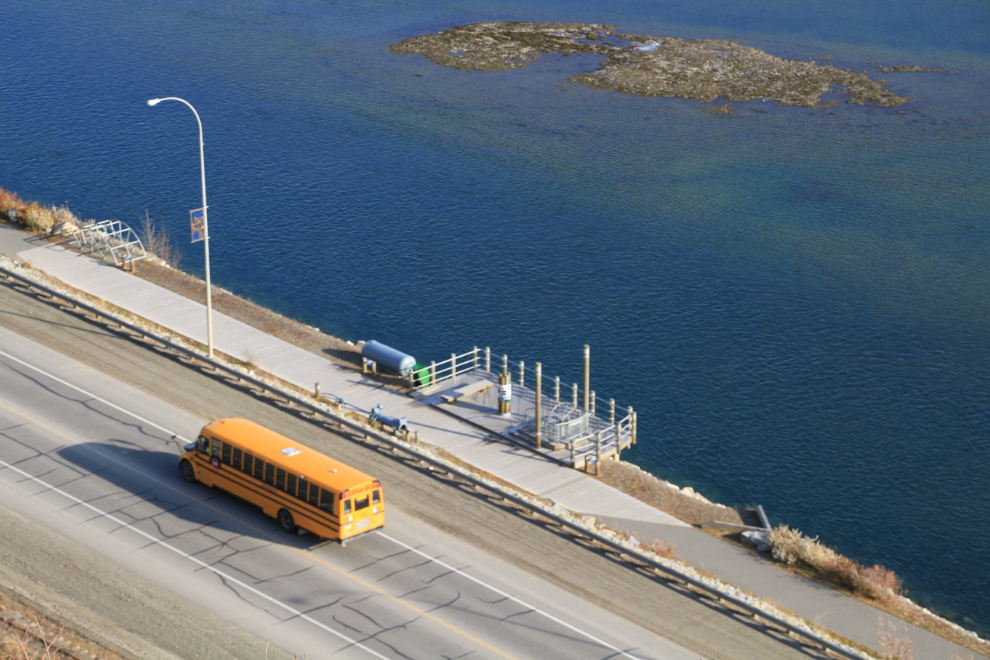
If you’re one of the people who use the walking path along the river, or ride the waterfront trolley during the summer, give some thought to what the waterfront used to be like. Imagine the sights, the sounds, the people that helped make Whitehorse what it is today.
